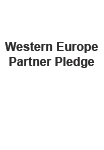Digitalization has transformed consumer habits and, consequently, the work of companies' sales teams. Today, a large part of the purchasing process takes place in the digital environment. As a result, companies need to invest in technologies specifically designed to optimize sales. We talk about Salestech and the key technologies in the industry.

Purchasing processes are changing. They are increasingly influenced by the digital ecosystem, even in companies that have physical sale points. The pandemic caused by Covid-19 has only accelerated this process, which is evidenced, for example, by the growth of e-commerce.
In 2021, Gartner published a U.S.-based report concluding that sales teams claim that sales process take 7.4 months. In contrast, customers say that their purchasing process takes more than 16 months.
This discrepancy proves that the buying process begins long before the sales or commercial team even interacts with customers. The initial phase of the purchasing process is discrete and primarily digital.
Increasingly demanding consumers begin to learn about brands long before sales teams become aware of it. They consume content online and start comparing suppliers and alternatives until they show signs of a potential purchase. When that happens, the sales or marketing team must take action. However, most of the time the sales team does not realize that the customer is interested because they do not have the right technologies in place.
While in marketing the use of martech is more common, salestech still has a lower impact.
What is Salestech and why invest in sales technologies?
Salestech includes those technologies that help the commercial or sales team to improve their productivity, commercial offer and results throughout the conversion funnel. Many Salestech technologies are also used by digital marketing teams.
Today there are a large number of specific technologies that facilitate the work of companies' commercial teams and that are also proving to optimize companies' commercial and sales results.
Between 2020 and 2021, McKinsey asked U.S. companies whether they considered the digitization of sales and the purchasing process to be effective. In April 2020, only 54% of organizations thought that sales digitization was effective, while in December 2021, 92% of companies said that the digitization effort of their marketing and sales teams was delivering the expected results.
Another IESE study published in 2021 reports that 63% of companies consider investment in Martech and Salestech to be useful. 16% of U.S. companies have not yet invested in Salestech and another 20% have, but believe they are not yet taking advantage of its full potential.
Latest reports confirm that investing in salestech improves the performance of organizations' sales teams, increase sales and, ultimately, optimize revenue.
Which Salestech tools should you invest in?
The Salestech world is growing more and more. Today there are a large number of tools dedicated to improving companies' sales and marketing teams performance. In addition, there are Salestech technologies for each stage of the conversion funnel.
In this sense, we can classify Salestech technologies according to their functionality:
- Strategy and performance technologies
- Sales activity organization technologies
- Sales procedures and policies technologies
- Sales execution technologies
Salestech for commercial strategy and performance optimization
The identification of potential customers is a fundamental part of the commercial strategy. Intent Data technologies are particularly relevant in this area. That is tools that provide valuable data on customer behavior and our potential customers' consumption of digital content
In the Intent Data sector, LeadSift stands out. LeadSift is platform that provides data on the customer journey of our target customers and helps sales teams to identify prospects and prioritize their efforts. If we have the ability to identify people who are actively consuming content related to what we sell, it will be much more efficient to prioritize our strategic efforts at a commercial and sales level.
Customer Data Platforms are also paramount. A Customer Data Platform (CDP) is a customer relationship management tool that collects and activates customer data and provides a 360º customer view. The CDP is an essential piece of gear to facilitate customer segmentation tasks, customer acquisition, customer loyalty, etc. In terms of CDP platform providers, Twilio, Segment and Tealium are the market leaders.
Forecasting or predictive analytics platforms are also key for the definition and implementation of the commercial strategy. These tools will help us to predict customer behavior and create specific offers tailored to their needs. Salesforce is currently the market leader.
Finally, we must highlight business intelligence tools such as Qlikview, SaS or Power BI.
Salestech for the organization of the commercial activity
When it comes to the organization and management of work routines and business processes, there are several technologies that can be useful.
For example, customer success management technologies such as Totango or Catalyst, or territory management tools such as Oracle and Salesforce, for example.
The capabilities of these technologies together with ABM platforms will help us to segment customers, work the territories, assign customer segments to people or teams and build the strategy to approach those potential customers.
Salestech for sales policies and procedures
The commercial activity also implies managing commercial and sales policies and procedures.
For example, we have tools that can help us manage performance and compensation among commercial types such as Nice or Anaplan. There are also technologies that streamline learning for sales teams. Lessonly is one of the most successful platforms, and it is a very easy-to-use tool that speeds up the updating of sales teams.
On the other hand, we have technologies focused on motivation and gamification such as Spinify or SalesScreen.
SalesTech for sales execution
Execution is obviously the most important for the sales and commercial sector. Therefore, the technologies included in this section are the most critical and the ones that can most influence our results.
Conversion funnel management technologies —such as CRM systems— stand out. In this area, once again, Salesforce, Hubspot and Pipedrive are market leaders.
Prospecting platforms such as Sales Navigator, LeadSift, Salesloft, Bombora and Bloobirds are also gaining importance. These types of technologies enable the management of customer interactions and, in most cases, automate them. In this sense, these platforms are also useful for marketing automation.
In terms of customer service, Salesforce and Zendesk predominate.
Finally, it is worth mentioning the relevance of tools that help us fix the pricing of our products or services, such as Salesforce or Quotient, which are currently market leaders in terms of pricing tools.
Conclusion
According to the latest studies, investing in sales and sales-dedicated technologies or Salestech optimizes companies' sales results. Companies themselves confirm this. However, before investing in any technology, it is essential to get information and explore the use cases of each tool we intend to acquire.



